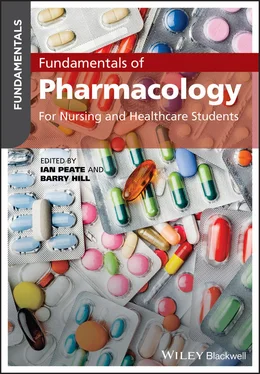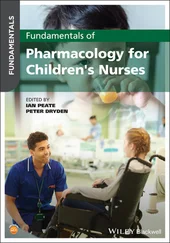There are a number of guidelines set out by various professional bodies in relation to pharmacology. The General Medical Council (GMC) have outlined expectations of doctors' ethical prescribing practices which aim to provide more detailed advice on how to apply ethical principles when prescribing and managing medicines (2013). Additionally, largely in response to the withdrawal of the Medicines Management standards by the NMC (2015), the Royal Pharmaceutical Society and the Royal College of Nursing collaborated in developing the ‘Professional Guidance on the Administration of Medicines in Healthcare Settings’ (2019). These standards seek to promote patient safety in relation to the administration of medicines by acknowledging the importance of guidance for health professionals that is enabling and supportive while being clear and concise. The document recognises the importance of a commitment to ethics, values and principles which put patients first. It is incumbent upon the individual healthcare professional to ensure that they are familiar with the most current guidance related to their own sphere of practice to ensure that ethical and legal considerations are applied.
All healthcare professionals have a responsibility to ensure that they are familiar with legislation related to the prescribing, storage and administration of medicines within their sphere of practice. A list of key documents that will support you in the development of knowledge in this area is offered in the Further Reading section.
The legal and ethical standards which govern research into pharmacological treatments are very specific to the context of clinical drug trials. During the Second World War, Jewish prisoners in Nazi concentration camps were used as subjects in medical experiments against their will, leading to permanent disfigurement, disability, trauma and in many cases death. In response to these atrocities, the Nuremberg Code (1947) was developed as international guiding ethical principles for the conduct of research involving human participants. They include principles of informed consent, non‐coercion and the right to withdraw, as well as the importance of robust protocols underpinned by beneficence. These principles were later encapsulated within the Declaration of Helsinki (World Medical Association, 2008) and further legislation has evolved to ensure the safety of human participants in clinical trials including: Data Protection Act (2018), Human Tissue Act (2004) and the Medicines for Human Use (Clinical Trials) Regulations (2004) as well as the Human Rights Act (1998).
Research is an important mechanism for healthcare professionals to ensure that the drug treatments we offer patients are thoroughly tested for safety and efficacy. Additionally, there is strong evidence emerging that research‐active hospitals have better patient outcomes, highlighting the importance and the responsibility healthcare providers have to offer their service users the opportunity to be involved in clinical trials (Ozdemir et al., 2015). It is essential that legislation enables clinical researchers to conduct clinical trials in the endeavour of medical advancement, while ensuring that participants are fully informed of the potential risks and benefits, are not coerced into consenting to participate, and are aware of their right to withdraw from participating at any time. The guiding principle is that the wellbeing and safety of the participants is paramount and takes priority over any other consideration.
Research Ethics Committees (RECs) have the remit to review any proposed research that involves human participants. Made up of a number of lay‐people and professionals experienced in their own field, it is the responsibility of the REC to interrogate the research protocol and to identify any aspects of the research consent and treatment processes which may pose an unacceptable risk to participants or the public. Approval from a REC is essential before a trial can go ahead. As the trial progresses, researchers will also need to seek ethical approval to make any amendments to the protocol, which may be something as minor as a change of wording within a participant information sheet, to something more substantial such as a change in the dose of medication to be administered. These changes will be implemented in line with Good Clinical Practice (GCP) principles (MHRA, 2012).
Despite these safeguards, there are notable incidences that have occurred in recent years related to the conduct of some clinical trials. For example, in 2006, volunteers in an early phase drug trial at the Northwick Park Hospital became seriously ill. The story became headline news after six participants reacted badly to the medication, suffering a severe immune response leading to organ failure and one participant requiring the amputation of his fingers. This led to a full investigation and the resulting report changed a number of practices in the running of drugs trials which sought to prevent this from happening again (Expert Scientific Group on Phase One Clinical Trials, 2006).
Fortunately, however, the ethical and legal frameworks which surround clinical research, limit these incidents and provide principles and guidance for the safe conduct of research and researchers.
Skills in practice: How to use medical ethics
Not all decisions are made easily, and, in some cases, there are multiple factors that influence decision‐making, such as personal experience, religion, regulatory codes, legal issues and so on. In practice, a practitioner will use a combination of all such factors to reach a decision; this is sometimes described as a systematic study of moral choices. In the first instance, the code of behaviour or conduct presented by a regulatory body is considered correct. Within healthcare, there are many examples of ethical decision‐making process which include varying numbers of steps to follow. Overall, there is the general adoption of principle‐based ethics to guide decision‐making practice within healthcare, which is evident in this example.
Step 1 – Ability to recognise an ethical issue.Ask yourself: could this scenario or decision cause harm or damage to someone or some group? Are there choices between different alternatives; for example, a good and bad alternative or, maybe, two bads or two goods? Is this situation bigger than what is efficient? Or what is legal? What are your initial gut reactions? By considering the scenario on an emotive level you can recognise your own assumptions, values and biases so that you can set them aside before analysing the situation critically.
Step 2 – Gathering the facts.What facts are already known? What other relevant facts need to be gathered? Who are the relevant stakeholders within this scenario and its outcome? Has everyone involved been consulted? Are some concerns more important than others?
Step 3. Evaluation of alternative options or actions.Includes questions from a range of approaches. From a utilitarian approach ask: which actions/option do the least harm and produce the most good? Considering the deontological approach – which actions/option best respects all stakeholder rights? From a nursing approach, which actions/option treat people proportionately or equally? Which actions/option best serve the whole community and not just some if its members? From a virtue approach, also consider which actions/option lead me based on the type of person I want to be?
Step 4. Make the decision.When all approaches have been considered, which actions/option best addresses the scenario? Which action/option is best based on all the stakeholder core values? Consider what others might say when you have shared your chosen actions/option, can you justify your choice?
Читать дальше












